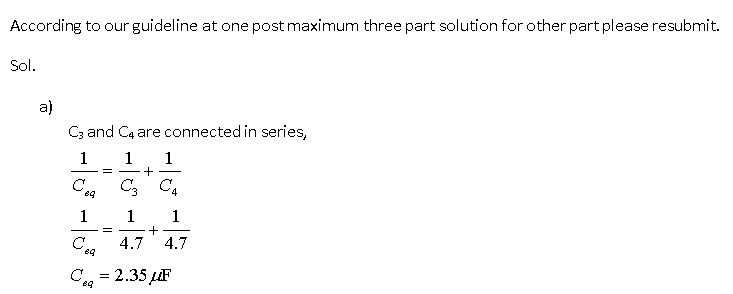In (figure 1) C1=C5= 8.3 microfarads and C2=C3=C4= 4.7 microfarads. The applies potential is Vab= 250 V. (A) what is the equivalent capacitance of the network between points a and b? (B) calculate the charge on capacitor C1. (C) calculate the potential difference across capacitor C1. (D) calculate the charge on capacitor C2. (E) calculate the potential difference across capacitor C2. (F) calculate the charge on capacitor C3. (G) calculate the potential difference across capacitor C3. (H) calculate the charge on capacitor C4. (I) calculate the potential difference across capacitor C4. (J) calculate the charge on capacitor C5. (K) calculate the potential difference across capacitor C5.
Dielectric Constant Of Water
Water constitutes about 70% of earth. Some important distinguishing properties of water are high molar concentration, small dissociation constant and high dielectric constant.
Electrostatic Potential and Capacitance
An electrostatic force is a force caused by stationary electric charges /fields. The electrostatic force is caused by the transfer of electrons in conducting materials. Coulomb’s law determines the amount of force between two stationary, charged particles. The electric force is the force which acts between two stationary charges. It is also called Coulomb force.
In (figure 1) C1=C5= 8.3 microfarads and C2=C3=C4= 4.7 microfarads. The applies potential is Vab= 250 V. (A) what is the equivalent capacitance of the network between points a and b? (B) calculate the charge on capacitor C1. (C) calculate the potential difference across capacitor C1. (D) calculate the charge on capacitor C2. (E) calculate the potential difference across capacitor C2. (F) calculate the charge on capacitor C3. (G) calculate the potential difference across capacitor C3. (H) calculate the charge on capacitor C4. (I) calculate the potential difference across capacitor C4. (J) calculate the charge on capacitor C5. (K) calculate the potential difference across capacitor C5.


Trending now
This is a popular solution!
Step by step
Solved in 5 steps with 5 images









